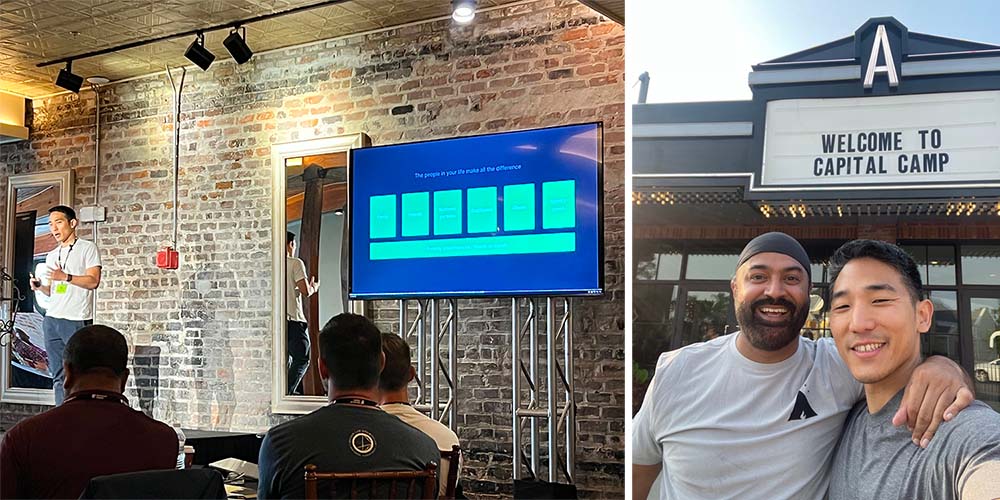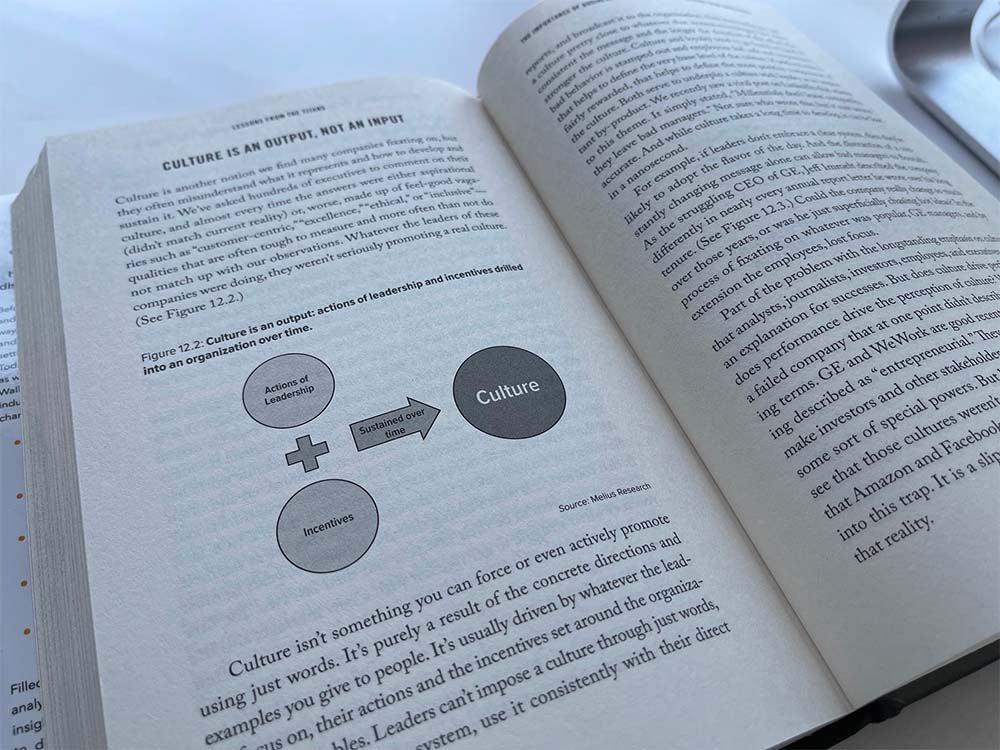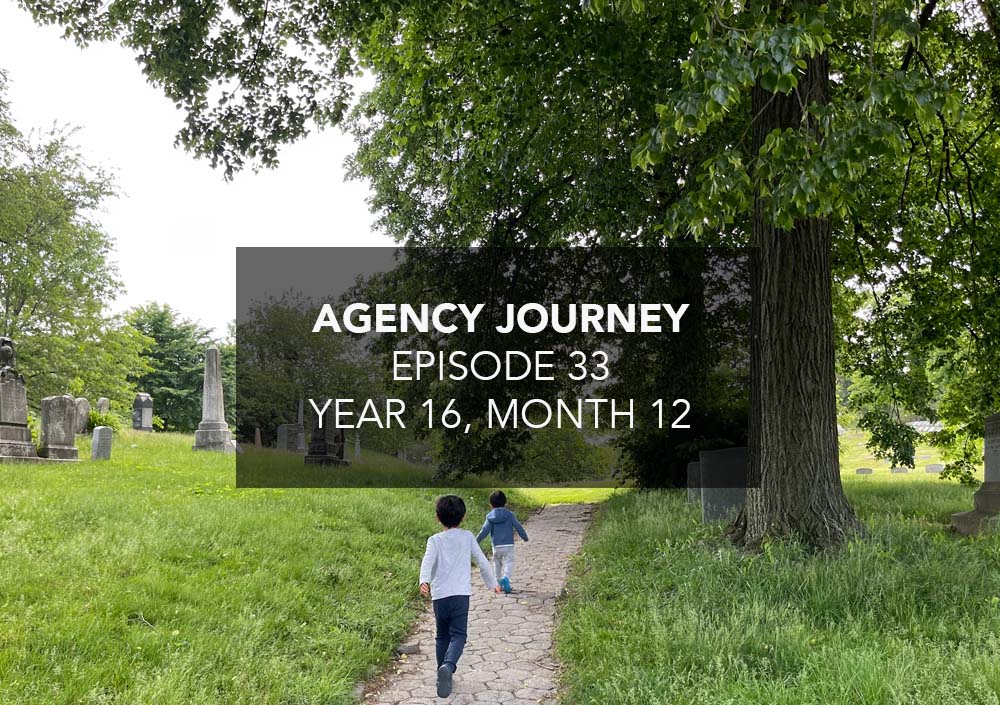May was a hard month. Lots of travel, meetings, and moments, both business and personal, that tested my patience. Thankfully, I knew this was going to be the case going in, so I tried to be as mentally prepared as possible. The trick was to take things one day at a time, enjoying the occasional down moments as best I could and also celebrating even the smallest of wins.
More travel, work, and personal obligations lie ahead, but it’s Memorial Day weekend, so I’m taking some time to relax, recharge, and reflect.
About Agency Journey: This is a monthly series detailing the happenings at my agency Barrel, founded in 2006. You can find previous episodes here.
Highlights
New Business Wins (Finally)
After going more than half a quarter without a major new business win, we finally turned a corner and began to sign deals towards the end of May.
In addition to a few signings, we have about half a dozen deals that should close next week. The numbers for this quarter were looking bleak, but in a blink of an eye, we’re close to getting back on pace.
This is the challenging part of agency business sometimes, especially the periods where a few large projects start winding down and there aren’t ready replacements to keep the utilization train humming along. The pressure builds with each passing week.
As frustrating as the period of no wins were for us, we were encouraged by the inputs. We felt that we were getting a decent volume of leads, that lead quality was fairly strong, and that we were having productive conversations with prospects.
Our Chief Experience Officer Lucas Ballasy, who has taken the reins on the business development front since March, has continued to evolve our approach to deals, testing various proposal formats, project pricing, and partnership collaborations (e.g. including solutions providers like Recharge or Rebuy in the proposal process). Much props to Lucas for staying positive and continuing to experiment even as we toughed it out through some disappointing losses. (Related: see Lucas’s blog post on some of these experiments)
I hesitate to even speculate why we went for such a long stretch without winning. My only concrete takeaway is that we can never have too many opportunities and that opportunities can take a very long time to turn into signed deals. We must always be planting the seeds for the future, cultivating relationships and staying top of mind in order to keep a steady volume of opportunities. The activities we engage in today may pay off weeks, months, or even years from now. What matters is that we’re disciplined and consistent in putting in the work.
Getting Results Through Networking
Networking as a term often gets a bad rap because it connotes a sort of transactional and sleazy way of interacting–the slick guy with the firm handshake with something to sell at a conference or cocktail mixer.
I’ve come to see networking in a more literal sense – the act of engaging with a collection of people, looking for ways to understand, organize, and connect people to benefit everyone within that network, including myself.
From my experience, this ends up boiling down to two activities – getting to know people and then making useful introductions. The hard thing about networking is that the results are often not visible for months if not years, but we have to trust that the efforts will eventually pay off. In the meantime, it’s important to enjoy the process as much as possible. I like meeting new people, getting a sense of what they do, how they work, and in what ways I can potentially be helpful. From time to time, I’ll hit it off with some folks and become friends. This enables more meaningful interactions like getting together for shared meals and opportunities to make multiple intros that help each other.
The beautiful part of networking is that there are compounding effects – the more people we get to know, the easier it is to connect people to each other, and the more goodwill we build up, resulting in more opportunities coming our way.
Related: check out my post “Networking: Tactics and Lessons for Connecting with Other People”
Attending a Couple of Conferences
Speaking of getting to know more people, I attended a couple of conferences in May. One was as a speaker for the Bureau of Digital‘s Owner Summit in New Orleans. I gave a talk about how writing Agency Journey has helped me as an agency owner. It was also great to hang out with other agency operators and talk shop.
Related: check out my recorded practice run-through video of the talk I gave at Owner Summit

Left, a pic of me on stage at Owner Summit giving a talk on Agency Journey (photo credit: Ben LeDonni at Creative MMS). Right, me with my buddy Chetan at Capital Camp. Chetan’s a long-time friend from Columbia where we both went to undergrad. He now runs a successful growth equity firm that combines consulting and investing.
The other was Capital Camp, a conference for investors and entrepreneurs in Columbia, Missouri. It was my second time there and it was a good time. I hung out and learned from some really smart and ambitious people who’re further along than me in building out their businesses, especially those who’ve built up their holding companies through acquisitions.
Conferences are a good way to continue building out the network. I will work to stay in touch with folks that I met this month, some with a LinkedIn follow-up connection and others with a one-on-one Zoom call to get to know them better.
Solidifying Bolster’s Offering
I’ve been spending some time with Bolster, our design studio with a focus on branding. It’s been a relatively slow process as we’ve been careful to develop our brand design process. We’ve completed two pilot projects for paying clients and are now looking to take on a few more. We’ve narrowed our offering down to two packages: a logo + brand system package and a BYOL (bring your own logo) + brand system package. We’re looking to price these under $20,000 and keep to a tight process.

A couple of slides from our Bolster Agency Overview deck.
What we’ve learned from conversations with prospective clients is that we’ll need to offer some kind of ongoing service for additional designs. We’ll most likely adopt a one-off pack of hours plan as well as ongoing quarterly plans to provide flexibility for clients to keep working with us.
The goal for us is to really hit our stride the 2nd half of this year. We’ve finalized our own branding for Bolster and a new website is forthcoming. A big to-do is to hire for a project/ops manager type who’ll complement Bolster co-founder & creative director Henry Alcock-White as things pick up.
Top of Mind
“Culture is an Output, Not an Input”
I finished reading Lessons from the Titans: What Companies in the New Economy Can Learn from the Great Industrial Giants to Drive Sustainable Success by Scott Davis, Carter Copeland, and Rob Wertheimer this month. It focuses on the ups and downs of industrial companies like GE, Danaher, CAT, Boeing, and others along with key business takeaways for building strong and enduring organizations.

This diagram nicely illustrates the concept of culture as an output.
One of the lessons that stood out to me is around culture. The takeaway is that culture isn’t something you infuse into a company but rather the outcome of how leaders behave and the way incentives are structured for the team. This excerpt from the book captures the concept really well:
“Culture isn’t something you can force or even actively promote using just words. It’s purely a result of the concrete directions and examples you give to people. It’s usually driven by whatever the leaders focus on, their actions and the incentives set around the organizational deliverables. Leaders can’t impose a culture through just words, but if they embrace a system, use it consistently with their direct reports, and broadcast it to the organization, then eventually you get a culture pretty close to whatever that system encourages. The more consistent the message and the longer the duration of the effort, the stronger the culture. Culture and loyalty tend to go hand in hand. If bad behavior is stamped out and employees feel safe and empowered, that helps to define the very base level of the culture. If performance is fairly rewarded, that helps to define the more positive component of the culture. Both serve to underpin a culture with loyalty as an important by-product.”
I’m reminded of how I’ve seen the culture improve at Barrel over the past few years. Leadership’s focus on delivering for our clients, holding each other accountable for performance, and continually improving our processes have led to some positive gains, both economic and the way we feel about the day-to-day.
When it comes to having “incentives set around organizational deliverables”, I think we have some gaps. We haven’t quite figured out how best to tie compensation tightly to desired business outcomes. Our profit sharing plan is in place but I don’t think it’s enough of an incentive for people to care deeply at this point. Figuring the incentive part out may unlock further cultural improvements.
One recent incentive approach that hasn’t quite worked for us: setting revenue targets at the start of the year and pegging bonus incentives to a percentage of amounts over that target. We had to quickly re-forecast the target numbers down after doing layoffs in January and seeing a downward trend in monthly bookings. And even at the re-forecast numbers, it’s unclear we’ll be able to beat, which might mean zero in bonus pay for the team.
Not paying bonuses in a down year for revenue could be a prudent move, but it doesn’t account for the profit side of the equation. One could hypothetically have a lower year of revenue but still come out with strong profits due to cost cuts and efficient operations, in which case, it would be smart to have an incentive plan that rewarded people for their contributions to such results. Right now, our profit sharing program does provide some upside whenever we do well with gross margins, but there’s room to further experiment and enhance our approach to incentives.
Shared with Partners
“The question should never be, “Should I pursue this opportunity?” The right questions are: If I pursue this opportunity, how much time, resources, effort, and investment are required? Is this in my wheelhouse (core competence)? What could go wrong? What are the returns if I am right and the costs if I am wrong? Can I live with being wrong?” (Keith J. Cunningham, The Road Less Stupid)
One of the turning points in my career was when I was able to see beyond the binary “yes/no” question of “Should I pursue this opportunity?” and ask myself about opportunity costs and upside. Even today, I find myself asking whether I’m allocating my time and resources correctly across our Barrel Holdings ventures and other activities (e.g. investing, advising, getting hands on with special projects, etc.).
“When a buyer says, “Great proposal, it’s made it to the short list,” or “We’re now looking only at you and one other firm,” or “Someone else is 25 percent less expensive making it a harder choice for me,” you do not have a trusting relationship with the buyer. The relationship you develop, coupled with conceptual agreement with its inherent ROI, should place you in a completely different category from competitors. Hence, the time required to develop that relationship actually results in faster, higher quality business.” (Alan Weiss, Million Dollar Consulting Proposals)
It helps to be extra skeptical of any opportunity where we’re considered a “finalist” but still going head-to-head with other firms. Chances are, it’s still a coin toss at best and at worst, someone else definitely has an edge and knows they’re more than just finalists. They probably have an existing relationship with one or more of the stakeholders. I know this because we’ve been on both sides: numerous 2nd place finishes where we learned later that the other agency had an existing relationship with a stakeholder and numerous 1st place finishes where we ourselves had an “inside track” with someone on the client’s team. Most agency selection processes are predetermined.
A quick related note: in cases where multiple agencies are finalists and have relationships with client-side stakeholders, the agency that has the relationship with the more powerful stakeholder wins. For example: one agency has a relationship with an investor on the board vs. the other one with a marketing manager who’s worked with the agency at a prior job – the agency with the investor relationship is more likely to win, especially if the investor is vocal and trusted by the ultimate decision-maker (usually the CEO/founder).
“Good coaches know that getting people to change is difficult. People prefer to stick with what they know how to do (and the way they know how to do it) rather than risk exposing themselves by trying to learn something new. To overcome this, good coaches are adept at structuring small pilot projects designed to give the individual (and the group) the experience of an early success. They rarely ask people to make major changes, but instead say “Let’s just try this one small thing and see if it will work.” Good coaches give people the confidence to try new things, and help them accomplish more than they expected they could.” (David H. Maister, Managing the Professional Service Firm)
This is great advice. I’m thinking it also might make sense from a parenting perspective.
“For every twelve people in your Met contact database to which you market yourself thirty-three times (33 Touch) you can reasonably expect to net two sales. One of those sales will likely be repeat business, and the other will likely be referral business. Marketing to your Met contact database is generally the most cost-effective form of lead generation.” (Gary Keller, Jay Papasan, Dave Jenks, Gary Keller, Dave Jenks, The Millionaire Real Estate Agent)
My thoughts on networking above were very much influenced by the advice from this book. The inputs are to consistently build out and nurture a database of prospective clients. This goes a step further with a ratio where for every 12 people you market to at least 33 times, you can expect 2 sales. Getting to this level of precision in our sales and marketing efforts is very much on my mind.
“A win doesn’t feel as good as a loss feels bad, and the good feeling doesn’t last as long as the bad. Not even close.” (Andre Agassi, Open)
Loss aversion is a powerful cognitive bias. Being aware of this and the ability to put things into a more forgiving and forgetful perspective is both more helpful and healthier.
